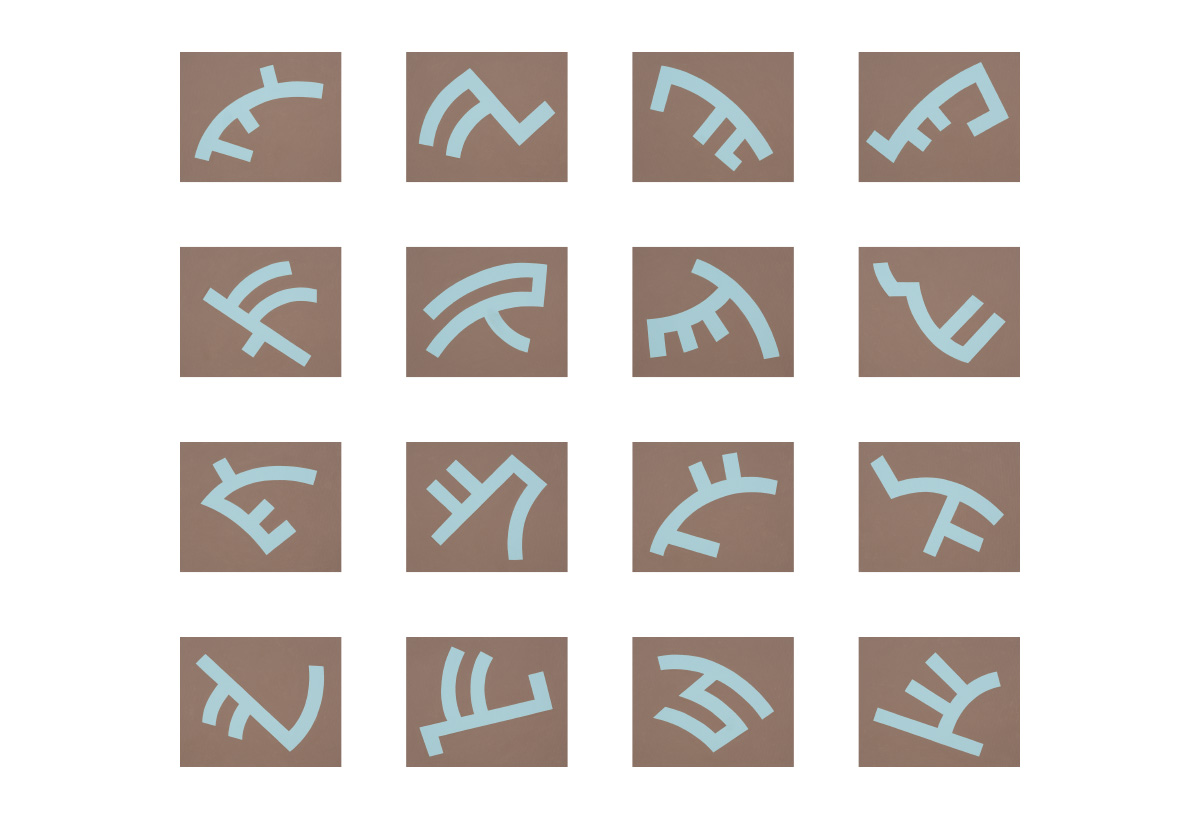The signs
My works of the last ten years consists of signs that elude interpretation. Signs as conceptual works, as opposed to the classic theories of semiotics that assume that a sign serves to “signify, express, or claim”1 something, that there must be a “relationship between signifier and signified”2 and that “can be understood as something that stands for something else.”3
In the diversity of theories, semiotic aesthetics also deals with signs without any meaning. In her book on semiotic approaches to abstraction, Elize Bisanz writes: “Painting as écriture becomes an amorphous sign; there is no unambivalent interpretation of an abstract painting, the meanings emerge in the process of reading, and change with the change of the time, the space, and the beholder.”4
Without admitting rules and symbolisms, i.e., signs without the possibility of understanding, this leads to unknown and uninterpretable forms. Their interpretation is left exclusively to the perception of the beholder. This unlimited interpretability of aesthetic signs means that there are always different and new perspectives of understanding possible, rupturing the logic of our everyday ways of understanding.
The idea of my signs came about in order to explore the possibilities of non-interpretability. And to demonstrate that our perception is characterized by the fact that we always expect explanations for what we perceive. Without cognitive possibilities, we create narratives contrary to knowledge.
My uninterpretable signs are supposed to help us accept not being able to know. Our perception describes always must a certain moment that could also be interpreted completely differently. Not being able to know broadens the horizon of our thinking more than an illusion of a large, comprehensive knowing. Whatever lies outside the possibilities of our thinking we should leave there, and not fall prey to the temptation to replace it with something invented.
1) Gottlob Frege, 1848 – 1925, German, logician, mathematician, and philosopher, created the foundations of linguistic semantics.
2) Fernand de Saussure, 1857 – 1913, Swiss, linguist; strongly influenced structuralism and semiotics.
3) Umberto Eco, 1932 – 2016, Italian, writer, philosopher, media scholar, one of the best-known contemporary semioticians.
4) Elize Bisanz, German, cultural studies scholar, author of Malerei als écriture: Semiotische Zugänge zur Abstraktion, 2002.

